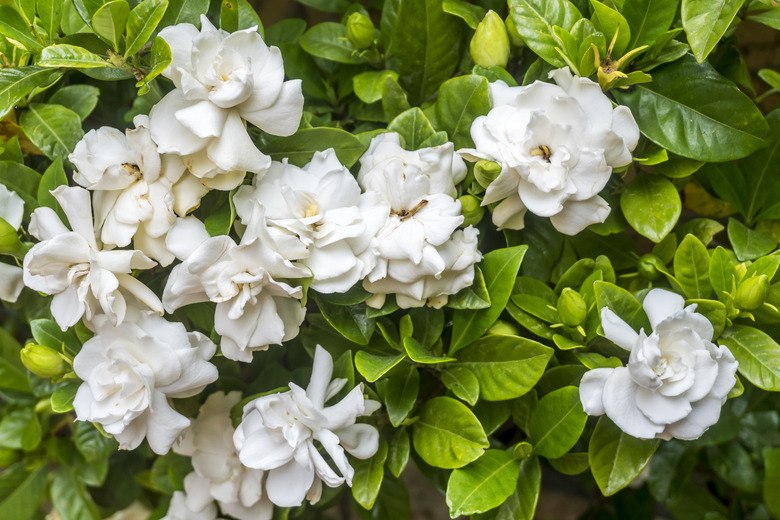The Best Location To Plant A Gardenia Bush
We may receive a commission on purchases made from links.
With their extremely fragrant white and waxy flowers, it's easy to see why gardenias (Gardenia spp.) are popular landscape additions. However, gardenias can act like fussy children in the landscape, as they are very particular about their planting site, so it's important to know the best location to plant a gardenia bush. When situated in their preferred location and given appropriate care, gardenias reward you with an abundance of sweet-smelling blooms.
Gardenia Noteworthy Characteristics
Gardenia Noteworthy Characteristics
Although there are more than 200 different types of gardenias, Gardenia jasminoides (USDA zones 7b-11), commonly referred to as Cape jasmine or common gardenia, is a very common species. Cape jasmine has numerous cultivars sporting different variations in form, flowers and size, with all requiring the same conditions for good growth.
Native to southern regions of Japan and China, gardenias perform as evergreen shrubs. Rounded shrubs fill with densely packed, glossy, dark-green foliage. Depending on the species and cultivar, gardenias average 2 to 15 feet tall and about half as wide. Gardenias work well as specimens, for use along a border or hedge, in fragrance gardens, and in cutting or pollinator gardens. They even grow well in pots.
However, with gardenias, it's all about the fragrant flowers, which start blooming in spring, depending on the cultivar. Flowering can continue for months, especially in the warmest areas of its hardiness zones. Blooms can be single or double and range in size from 1 inch in diameter to larger than 3 inches. You can bring the gardenia's sweet aroma indoors by floating the flowers in a bowl of water.
Preferred Site Location and Soil
Preferred
Site Location and Soil
Although planting gardenias in their preferred location won't totally reduce their fussy nature, it will certainly reduce potential problems. The first consideration when selecting a location is that gardenias despise having their roots disturbed. Therefore, it's important to plant them in their permanent location without interference from tree roots or the future possibility that they will need to be relocated. Select a location protected from strong winds to prevent damage. In addition, the gardenia requires a site receiving good circulation of air, which prevents potential pest and disease problems.
Gardenias are very particular about their soil, requiring it to drain well and be acidic with a pH of 5.0 to 6.5. They do not like alkaline conditions. In fact, planting a gardenia too close to a concrete walkway or foundation can result in the plant's suffering poor health and growth due to the soil becoming too alkaline. Before planting gardenias, amend the planting site with a good amount of compost, aged manure or other organic matter.
Required Sunlight and Basic Aftercare
Required
Sunlight and Basic Aftercare
Gardenias prefer a site located in full sun, partial shade or fluctuating shade. However, gardenias grown in sunnier conditions produce the best growth and production of flowers. Additionally, those grown in conditions that are too shady have a tendency to produce leggy growth, and the amount of blossoms is reduced. If your particular location experiences extremely hot summer temperatures, the gardenia welcomes receiving a bit of shade during the hottest portion of the afternoon.
For the best performance, water the gardenias regularly to keep the soil moist but not soggy. Depending on local weather conditions, you may have to water several times a week and possibly more during the summer. Water the gardenias at the base, keeping moisture off the foliage to prevent disease problems. Fertilize gardenias with a blend for acid-loving plants two to three times yearly, applying it in late winter to early spring through late summer.
